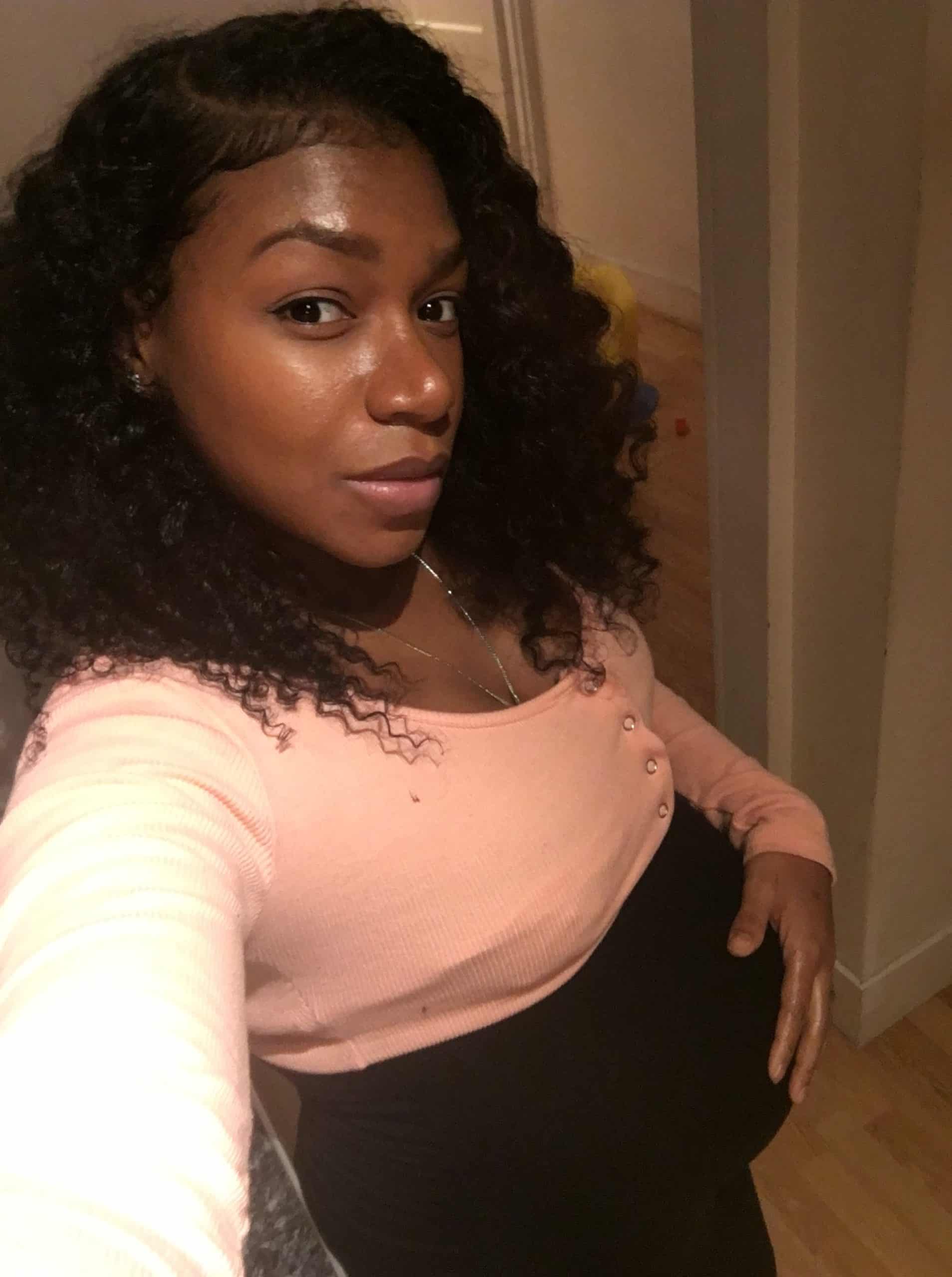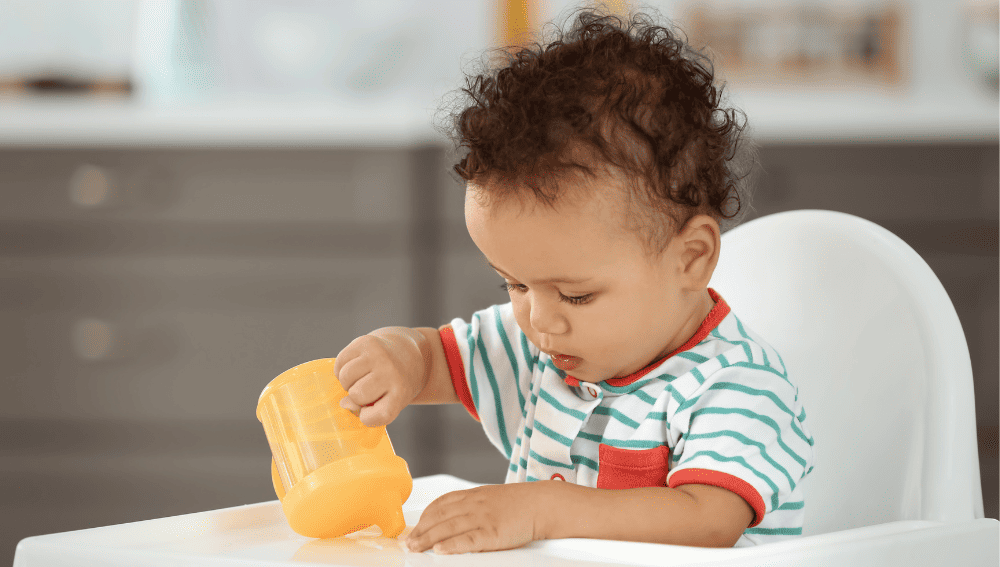Babies are known for their playful nature, and they often find joy in simple things around them. One common sight is a baby playing with a bottle instead of drinking from it. While this may seem harmless, it can raise concerns for parents and caregivers.
Understanding a baby’s interaction with bottles is crucial in addressing this issue. Babies may play with bottles due to curiosity or teething, or they may simply find it comforting. However, it can also be a sign of feeding challenges or health factors that need attention.
Feeding patterns and challenges can vary among babies, and it is important to adapt to their changing needs. Some babies may prefer different types of bottles or nipples, while others may need more frequent feedings.
Additionally, health factors such as reflux or allergies can also affect a baby’s feeding. By understanding these factors, parents and caregivers can better support their baby’s feeding and overall development.
Key Takeaways
- Babies may play with bottles for various reasons, including curiosity, teething, or comfort.
- Understanding a baby’s feeding patterns and challenges, as well as their health factors, can help address the issue of bottle play.
- Adapting to a baby’s changing needs and providing appropriate support can promote healthy feeding and development.
Related: Baby Pushes Away When Held
Understanding Baby’s Interaction with Bottles
Bottle feeding is a common practice among parents who want to ensure that their babies receive the necessary nutrients for their growth and development.
However, some babies may exhibit behaviors that seem to contradict the purpose of bottle-feeding, such as playing with their bottles instead of drinking from them.
When a baby chews on the bottle instead of drinking, it may be a sign that they are experiencing discomfort, such as teething pain or an ear infection. In such cases, it is important to consult with a pediatrician to rule out any underlying medical issues.
Another reason why a baby may fight the bottle but is still hungry is that they may be experiencing a bottle strike. This occurs when a baby refuses to drink from a bottle that they previously accepted.
It can be caused by various factors, such as a change in formula, nipple flow, or temperature. In such cases, parents may need to experiment with different bottles and nipples to find one that the baby will accept.
Babies are naturally curious and enjoy exploring their environment, including their bottles. Chewing on the bottle or playing with it may be a way for them to satisfy this curiosity.
However, it is important to ensure that the baby is not using the bottle as a substitute for other forms of stimulation, such as social interaction or physical activity.
In summary, a baby’s interaction with bottles can be influenced by various factors, including physical discomfort, bottle strikes, and curiosity.
Parents should observe their baby’s behavior and consult with a pediatrician if necessary to ensure that their baby is receiving the necessary nutrition and care.
Feeding Patterns and Challenges
Feeding Schedule and Issues
Establishing a feeding schedule for babies can be challenging. It is important to ensure that they are getting the right amount of milk and nutrients throughout the day.
Some babies may need to be fed more frequently than others, and it is important to monitor their weight gain to ensure they are getting enough milk.
One common issue that parents face is trying to determine when their baby is hungry. Some babies may cry when they are hungry, while others may not show any signs at all.
It is important to pay attention to your baby’s cues and establish a feeding schedule that works for both you and your baby.
Bottle Feeding vs Breastfeeding
There are many different opinions on whether bottle feeding or breastfeeding is better for babies. Breast milk is considered the most nutritious option and provides many health benefits for both the baby and the mother.
However, some mothers may not be able to breastfeed for various reasons, and bottle feeding can be a good alternative.
When bottle feeding, it is important to choose the right type of bottle and nipple for your baby. There are many different options available, including bottles with different flow rates and nipples with different shapes.
It may take some trial and error to find the right combination that works best for your baby.
Dealing with Refusal to Drink
Sometimes babies may refuse to drink from a bottle or breast. This can be frustrating for parents, but it is important to remain patient and try different methods to encourage the baby to drink.
Some babies may prefer a different type of bottle or nipple, while others may need to be coaxed into drinking with a different feeding environment.
It is important to monitor your baby’s weight gain and ensure that they are getting enough milk. If you are concerned about your baby’s feeding patterns or if they are not gaining weight, it is important to speak with a healthcare provider.
They can provide guidance and support to help you establish a feeding schedule that works for both you and your baby.
Health Factors Influencing Baby’s Feeding
When it comes to feeding, babies can be unpredictable. Some babies may play with their bottles instead of drinking from them, which can be concerning for parents.
However, there are several health factors that may be influencing a baby’s feeding habits.
Teething and Feeding
Teething can be a painful process for babies, and it can affect their feeding habits. When babies are teething, they may experience discomfort in their gums, which can make it difficult for them to suck on a bottle. In some cases, babies may prefer to chew on the bottle instead of drinking from it.
To help alleviate teething pain, parents can try giving their baby a teething toy or a cold washcloth to chew on before feeding. It may also be helpful to offer smaller, more frequent feedings to avoid overwhelming the baby’s sore gums.
Reflux and Feeding
Acid reflux is a common condition in babies that can also affect their feeding habits. When babies have reflux, the contents of their stomach can flow back up into their esophagus, causing discomfort and pain.
This can make it difficult for babies to drink from a bottle, and they may refuse to eat or only take small amounts.
If a baby is experiencing reflux, it is important to speak with a pediatrician to determine the best course of treatment. In some cases, medication may be necessary to help manage the symptoms of reflux.
Parents can also try holding the baby upright during feedings and burping them frequently to help reduce reflux symptoms.
In conclusion, there are several health factors that may be influencing a baby’s feeding habits. Teething and reflux can both affect a baby’s ability to drink from a bottle, but with the right strategies, parents can help their baby feel more comfortable and well-fed.
Adapting to Baby’s Changing Needs
Babies can be easily distracted during feeding time, and sometimes they may choose to play with the bottle instead of drinking from it.
This can be frustrating for parents, but it’s important to remember that babies’ needs change as they grow and develop. Adapting to these changes can help ensure that babies are getting the nutrition they need.
Choosing the Right Nipple
When babies become distracted during feeding, it may be helpful to try a different nipple. Some babies prefer nipples with a slower flow, while others may need a faster flow to keep them engaged.
It’s important to choose a nipple that is appropriate for the baby’s age and development level.
Positioning and Comfort During Feeding
Proper positioning and comfort during feeding can also help reduce distractions. Parents should make sure that the baby is in a comfortable position, with the head slightly elevated.
This can help prevent milk from flowing too quickly and causing the baby to choke. Holding the baby close and making eye contact can also help keep the baby engaged.
Transitioning from Bottle to Cup
As babies grow and develop, they will eventually need to transition from the bottle to a cup. This can be a challenging process, but it’s important to start early and be patient.
Parents can begin by introducing a sippy cup with a soft spout, and gradually transitioning to a harder spout as the baby becomes more comfortable.
Overall, adapting to a baby’s changing needs can help ensure that they are getting the nutrition they need and help reduce distractions during feeding time.
By choosing the right nipple, positioning the baby properly, and gradually transitioning to a cup, parents can help their baby develop healthy eating habits.
Additional Considerations and Tips
When a baby plays with a bottle instead of drinking, there are a few additional considerations and tips that parents should keep in mind. Here are some important factors to consider:
Nipple Flow
One of the most common reasons why babies play with their bottles instead of drinking is because the nipple flow may be too slow or too fast.
Breastfed babies, in particular, may struggle with the flow rate of a bottle nipple. Parents should experiment with different nipple flows to find the one that works best for their baby.
Cold Milk
Some babies may prefer their milk to be warmer than room temperature. If a baby is playing with a bottle instead of drinking, parents may want to warm up the milk slightly to see if that helps.
However, it is important to never microwave a bottle as it can create hot spots that can burn the baby’s mouth.
Tired Baby
If a baby is tired or sleepy, they may not be interested in drinking from a bottle. Parents should try to feed their baby when they are alert and awake to increase the chances of a successful feeding.
Bonding
Playing with a bottle can be a way for a baby to bond with their caregiver. Parents can use this time to cuddle and interact with their baby, even if they are not actively drinking from the bottle.
American Academy of Pediatrics
The American Academy of Pediatrics recommends that parents avoid giving cow’s milk to babies under one year of age. Cow’s milk does not provide the necessary nutrients for a baby’s growth and development and can also cause digestive issues.
Older Children
If an older child is playing with a baby’s bottle, parents should monitor the situation closely to ensure that the baby is safe. Bottles and their components can be a choking hazard for young children.
By keeping these additional considerations and tips in mind, parents can help their baby successfully drink from a bottle and ensure that they are getting the nutrients they need for healthy growth and development.
Frequently Asked Questions
How to teach baby to drink from bottle?
Teaching a baby to drink from a bottle can be a challenging task, but it is essential for their growth and development. Start by introducing the bottle to your baby when they are calm and alert. Allow them to explore the bottle with their hands and mouth.
Then, gently touch the nipple to their lips and let them suck on it. Gradually increase the amount of milk in the bottle as your baby becomes more comfortable with it.
Baby slurping bottle – is this normal?
Yes, it is perfectly normal for babies to slurp or make noise while drinking from a bottle. It is a sign that they are drinking effectively and getting the milk they need.
However, if your baby is making excessive noise or struggling to drink, it may be a sign of a problem. Check the nipple size and make sure it is appropriate for your baby’s age and development.
When do babies start teething?
Babies typically start teething between 4 and 7 months of age. However, some babies may start as early as 3 months, while others may not start until they are a year old.
Teething can be a difficult time for babies, and they may experience discomfort and irritability. Providing a teething toy or a cold washcloth can help soothe their gums.
Bite proof bottle nipples – are they necessary?
Bite proof bottle nipples are not necessary, but they can be helpful if your baby has started teething or has a habit of chewing on the nipple.
They are made of a firmer material than regular nipples and can withstand biting and chewing. However, they may not be as comfortable for your baby to use as softer nipples.
Baby won’t drink bottle – what can I do?
If your baby refuses to drink from a bottle, there may be several reasons. They may be full, tired, or not feeling well. Try offering the bottle at different times of the day or in different positions.
You can also try different types of bottles or nipples to see if your baby prefers a different style. If your baby continues to refuse the bottle, consult with your pediatrician.
How do I stop my baby from snacking on the bottle?
Snacking on the bottle can lead to overfeeding and can be a difficult habit to break. Try to establish a feeding schedule and stick to it.
Offer the bottle when your baby is hungry, but avoid using it as a pacifier or comfort object. If your baby is still hungry after finishing the bottle, offer a small amount of additional milk or formula in a separate feeding.
Editorial pick: Can Teething Cause Baby to Refuse Bottle

Iesha is a loving mother of 2 beautiful children. She’s an active parent who enjoys indoor and outdoor adventures with her family. Her mission is to share practical and realistic parenting advice to help the parenting community becoming stronger.


